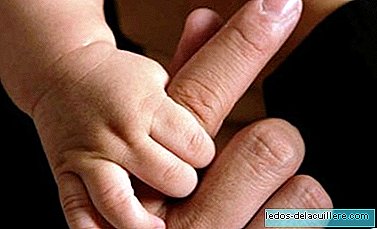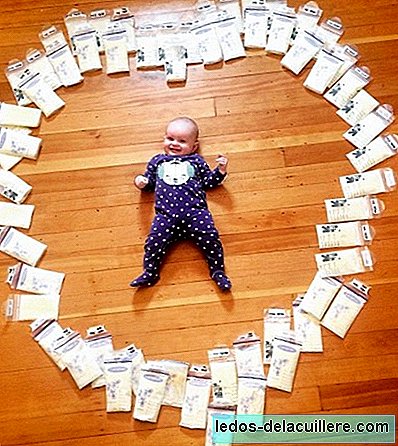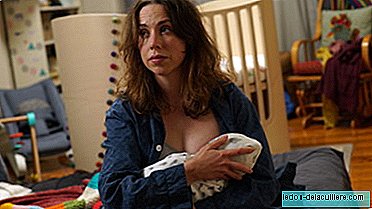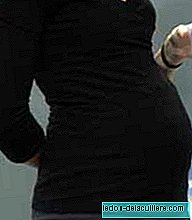Children sometimes play, run and jump totally oblivious to danger. It is part of its carefree nature and that is why falls in children are common, although fortunately in most cases without any serious repercussions.
But bumps in the mouth tend to alarm a lot, both to children and parents, since being such a vascularized area it is common for them to bleed dramatically or even the teeth are affected. We have asked Dr. Beatriz Iglesias Sánchez, a member of the Spanish Society of Orthodontics and dentist and specialist in orthodontics at the Pérez Varela Clinic, about how to proceed in these cases and what to do if the tooth suffers any damage.
Keep calm and assess the mouth wound
The first thing that Dr. Iglesias advises us about a blow to the mouth or fall of our son is keep calm even if we see a lot of blood. If we are calm our son will be too, and it will be easier to make a first assessment of the damages suffered.
"The first thing is to try to calm down even if we see blood. These wounds bleed a lot because it is a very vascular area and tend to be more bulky than they really are."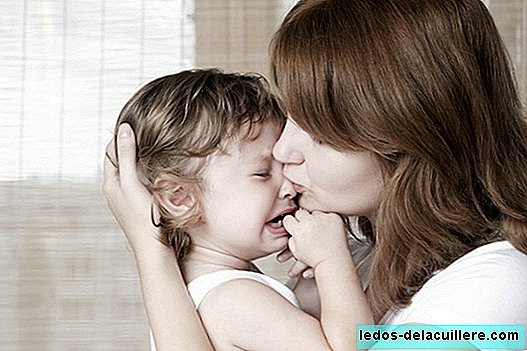
"If the accident has occurred at home, The first thing we should see is if there are any broken teeth. If there isn't, and the mouth wound stops bleeding within a few minutes, there is no need to worry. It will swell a lot and so that it does not get infected it is necessary to clean it well with a gauze damp in water. When it stops bleeding we should apply ice for a few minutes, wrapped in a plastic bag so as not to burn in the cold "- the dentist advises us.
Dr. Iglesias it alerts us that mouth wounds tend to look very ugly and this can overwhelm parents a lot. But the positive part is that they heal very quickly, especially in children, so the discomfort should not go beyond two or three days.
If the tooth breaks we must go to the ER
Before a wound in the mouth that does not stop bleeding within a few minutes, or if a tooth has broken into one or several pieces, or has come off in its entirety, the doctor advises to go urgently to our reference hospital. But first, it is important that we follow this recommendation:
"Whether the tooth has come off in its entirety, as if it has been broken into one or several pieces we must put it in a container with physiological serum, or failing that in milk. And never rub the pieces" - advises the doctor.In the hospital we go to, an ondontologist should assess the damage who will be the one decide if it is worth implanting the tooth or not, depending on how it has been broken and if it is a permanent or milk tooth.
"So that the tooth can be implanted again, something that is very important if it is a definitive tooth, you need to have part of the periodontal ligament and therefore should not be rubbed to clean it. Just pick it up and put it in physiological serum or milk to take it to the specialist's office "- recommends Dr. Beatriz Iglesias
Necrosis or death of the tooth nerve
If in the fall or the impact the child is given a strong blow to the jaw there is a risk of pulp necrosis or death of the tooth nerve. This is because the trauma blocks the blood supply of the tooth immediately.
In cases where tooth breakage does not occur, Pulp necrosis is not appreciated at the time of the stroke It may take months to show the face since the tooth does not experience visible changes quickly.
However, over time you will acquire another color that can be from yellow, to gray or violet. It is at this time when the parents, alarmed by the change of color of the dental piece, usually go to the pediatric dentist who would be the one to do an x-ray to assess the condition of the tooth and confirm the suspicion of pulp necrosis.
"Pulp necrosis takes months to be visible since the injury occurs, so it would not be worth doing any review x-ray at the time of the coup, since nothing would be appreciated. Once the necrosis is diagnosed, the best treatment options for each specific case will be assessed "- says the dentist.
Pulp necrosis of baby teeth
In cases where necrosis has occurred in a milk tooth, one of the options that the dentist might consider would be to practice a pulpectomy, that is to say a tooth endodontics. But Dr. Iglesias insists that it is not the only possible option and that in addition, it cannot always be carried out.
On other occasions, it is likely that after assessing the damage suffered, the pediatric dentist opts for don't touch the milk tooth and wait for it to end up falling by itself, giving way to the final tooth that will be born without any problem.
"In most cases, when pulp necrosis occurs in a milk tooth the only drawback would be the aesthetic issue, because the child will have a tooth of another color, but as soon as the necrotic tooth falls and the final one comes out there will be no problem "
Pulp necrosis of definitive teeth
On the other hand, if necrosis affects a definitive tooth, the problem ceases to be exclusively aesthetic:
"In this case there may be a risk of ankylosis, which to put it in a simple way of understanding, happens when the tooth fuses to the bone. The main consequence of ankylosis is that the tooth cannot move even when doing an orthodontics "- explains the orthodontist Beatriz Iglesias

Today there is no way to regenerate the tooth nerve, so it is impossible to act against necrosis, or prevent it from occurring after a stroke. Even so, if our child is hit hard in the mouth and after a while we observe changes in the coloring of one or several dental pieces, it is important to go to the children's orthodontist for an evaluation and follow-up.
IStock photos
Acknowledgments Dr. Beatriz Iglesias Sánchez, dentist at the Pérez Varela Dental Clinic
In Babies and More Stains on the teeth of children, Dentist, Teeth, My son has broken a tooth: what do I do ?, Falls


